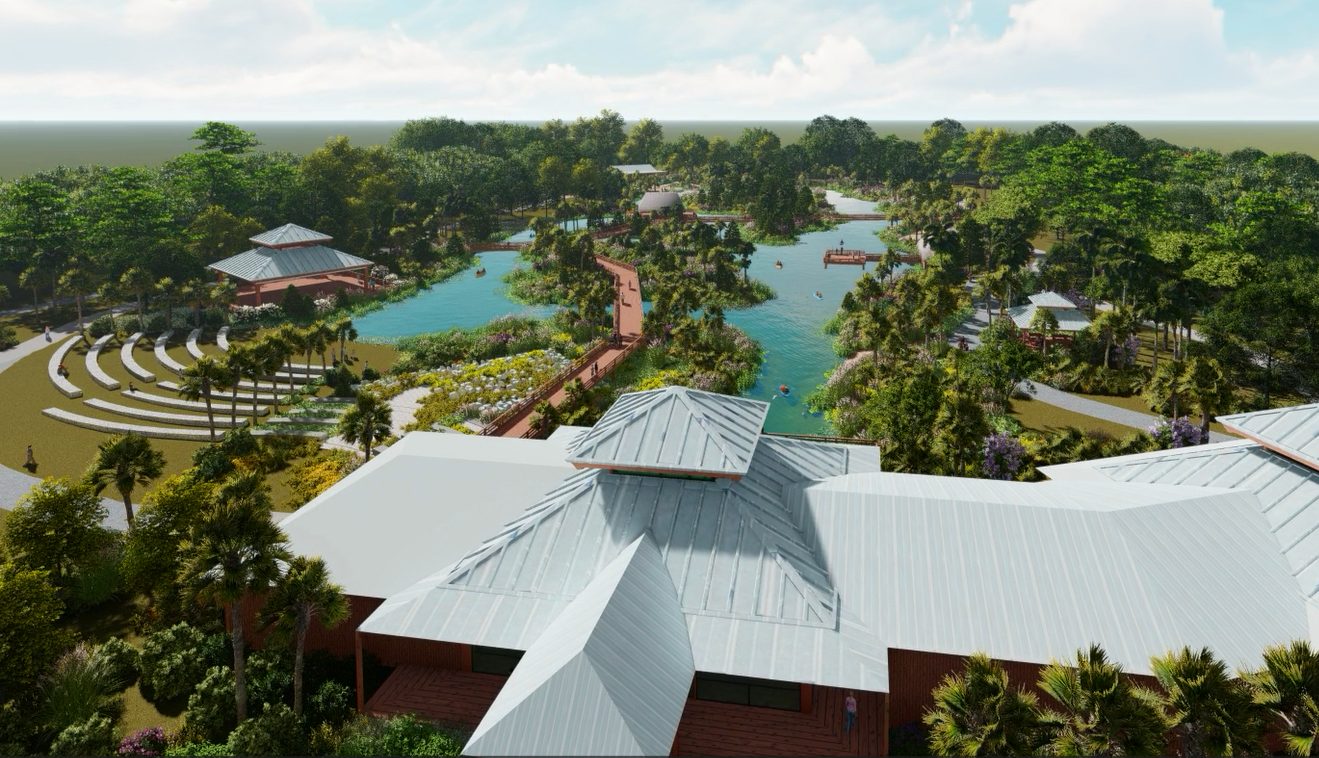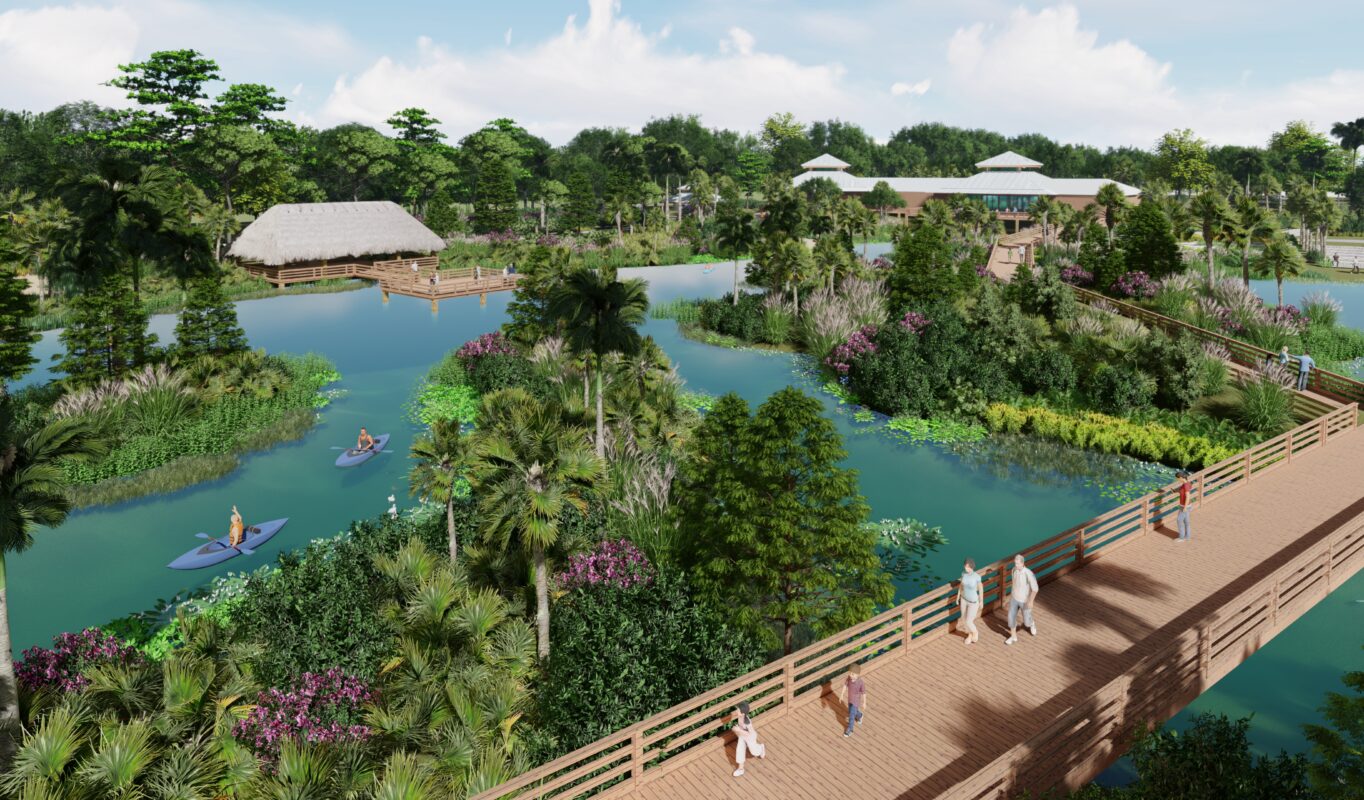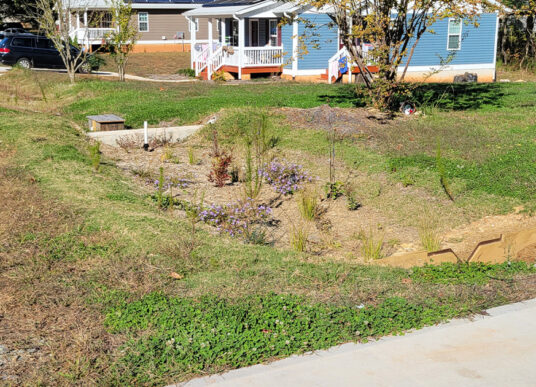For decades, there has been a wastewater treatment facility in Jupiter, Florida, to protect the Loxahatchee River.
This 7.6-mile waterway is one of only two nationally designated wild and scenic rivers in the state. To continue these protective efforts, the Loxahatchee River Environmental Control District (LRECD), an independent special district/utility and the lead authority on the river, tasked KCI with the master site planning and transformation of a 20-acre disturbed site into an environmental engagement campus. The goal was to further the stewardship of the river through remediation, education, and recreation.
Originally developed in the 1960s, the site was used as a receiving pond for treated effluent, a by-product of the utility’s water treatment processing. Although current processed wastewater is handled by reclaimed water distribution to consumers or through deep well injection, improving stormwater quality became a top priority in shaping both the master plan and the site features. The site had unique aspects to consider due to public land surrounding three of its sides, featuring a historic battlefield and miles of existing local and regional trails through several high-quality natural ecosystems. The watershed itself is part freshwater and part saltwater, making it home to a wide variety of wildlife including many rare species, such as the manatee and wood stork, adding to the site’s truly wild ecosystem.
Intrigued with these opportunities, our team set out to perform site analysis and inventory before creating concept designs and budgeting. To fully capture their vision, KCI worked closely with LRECD to preserve and expand the natural habitats on the site while simultaneously improving the quality of the river’s watershed. In order to accomplish these goals, KCI developed a masterplan to guide the development of the property. The master plan included four distinct implementation phases: remediation, site amenities, storm, drainage, and landscaping, and site development.
To improve water quality, remediation will cap the sediment in the existing lake and eliminate invasive plants, promoting better biological function as well as basic educational use of the area. The site amenities phase will address the accessibility and parking at the establishment and introduce utilities, restrooms, Chickee Huts (historic native shelters supported by posts with a raised floor and thatched roof) and buffer landscaping. These features will permit basic River Center programs to operate from the site and access the river, allowing for more activities with larger groups.
Recognizing the need for improvements that benefit the natural landscape, the storm, drainage, and landscaping phase incorporated features such as a pavilion, boardwalk, and ADA pathways. To this end, our team proposed the creation of passive biofiltration systems. This innovative strategy has the potential to prevent impact to surface waters through reduced sediment load while sustaining various flows and stormwater mixtures. In addition to the filtration system, KCI’s designers suggested stormwater-focused wetlands to provide numerous beneficial services for people and wildlife, including protecting and improving water quality and natural habitats, storing floodwaters, and maintaining surface water flow during dry periods.
Finally, the site development phase will construct the main campus buildings and other elements to enhance recreational and educational activities, including an environmental engagement center, an amphitheater, three indoor and outdoor classrooms, a fishing pier, and a boathouse. Designated areas also feature aquaria, touch tanks, animal care units, and a rainfall marker garden.
 Our team focused on improving the area in a conceptual and sustainable way to ensure present and future generations have the opportunity to flourish, both environmentally and recreationally.
Our team focused on improving the area in a conceptual and sustainable way to ensure present and future generations have the opportunity to flourish, both environmentally and recreationally. To facilitate board approval, KCI developed an animated video that effectively communicated the master plan to the LRECD staff and highlighted the exciting recreation potential of the site. KCI was able to efficiently present ideas, visual aids, and additional clarification that inspired board members and advanced their dialogue to reach consensus.
“This transformation not only benefits the future of the site and its natural environment, but the community as a whole, through inspiring and informative educational opportunities that our team was proud to deliver.”
Todd Mohler, RLA, ISA, IA, Senior Project Manager
 To advance the area, our team visualized a stimulating hub of recreational activities to better the lives of community members through physical activity, socialization, and educational guidance.
To advance the area, our team visualized a stimulating hub of recreational activities to better the lives of community members through physical activity, socialization, and educational guidance. Now that the master plan is complete, the design stands as a testament to the community’s unwavering commitment to protecting public health and preserving the Loxahatchee River and its natural habitats through innovative wastewater solutions, research, and environmental management. It highlights the vital role played by LRECD promoting stewardship among residents and visitors.



